Motorcycle-Rickshaw
In India, not very far from New Dehli (about 25 mile, or 40 km) is the Transport Museum on Major District Road 132, Bilaspur Chowk, Taoru, Gurgaon district, Haryana. When you come by coincidence in the area, you can see there many of the vehicles depicted on the stamps from the series "Means of Transport Through the Ages", including the Rickshaws.
For if you are not able to do so on short notice, we will
discuss the vehicle and the issue here. We are talking about the public transport means below: the motorcycle-rickshaw.
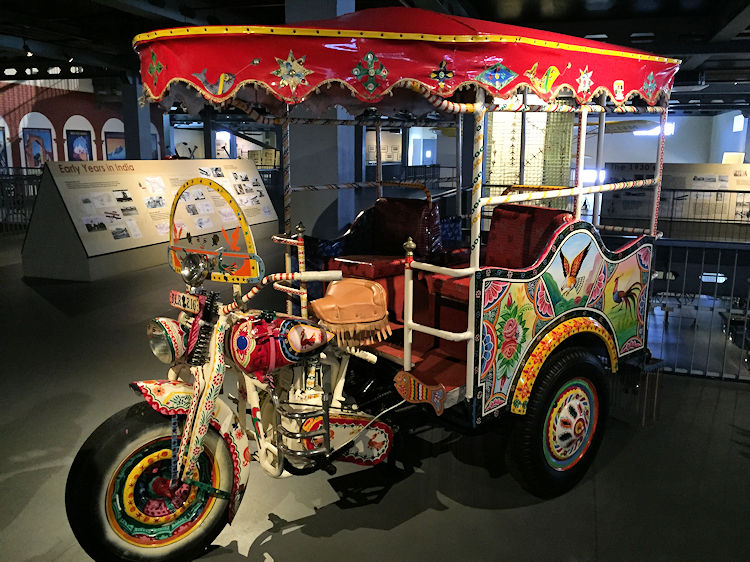
The Rickshaw is in the museum between the 4-wheeler gallery and the 2-wheeler balcony.
Rickshaws are originally Japanese, and the word is a junction of Riki = power and Sja = vehicle. "Our" motorcycle-rickshaw
has developped in the years after the Second World War, when the American army left large amounts of superfluous Harley's, Indians and English motorcycles in the liberated Asian countries. Clever people used these free engines to make simple taxis and freight transporters. By the way, the engine in this specific rickshaw is not a Harley or Indian but a stationary diesel engine, probably from Enfield.
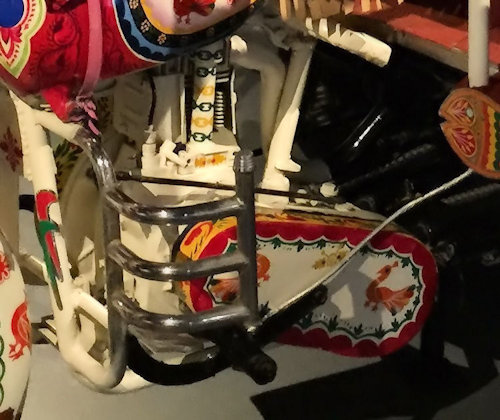
The stamp has been issued on March 25th 2017 and the presentation of the large series, 20 stamps in total, was held in the Governmental Post Museum in Chennai.
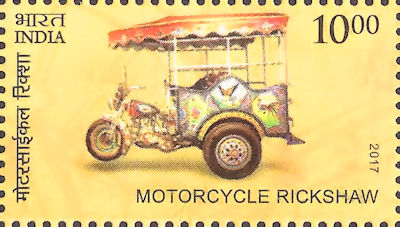

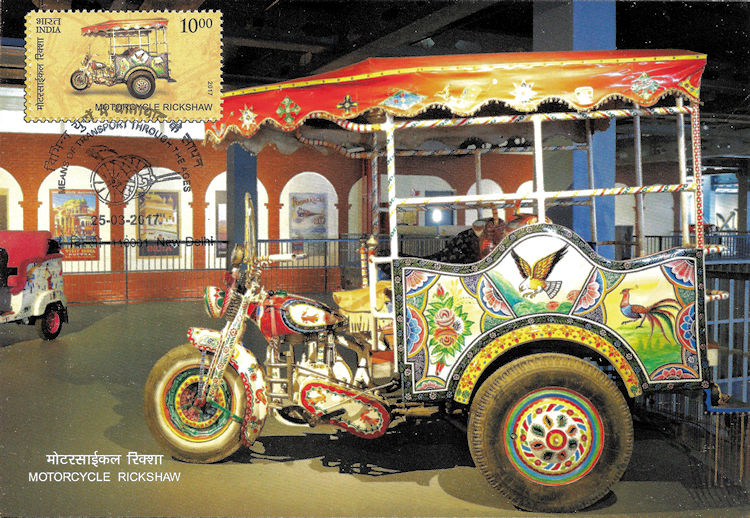
The 20 stamps have been combined in various manners: in 5 blocks with each 1 type of vehicles, and as collection sheet with all stamps in it. The "type-sheets" each count 4 columns with 5 identical stamps, and have as themes: Public Transport, Sedan Chairs (litters), Ox- and Horse carriages, Old Cars and Rickshaw Vehicles, in which our stamp is included.
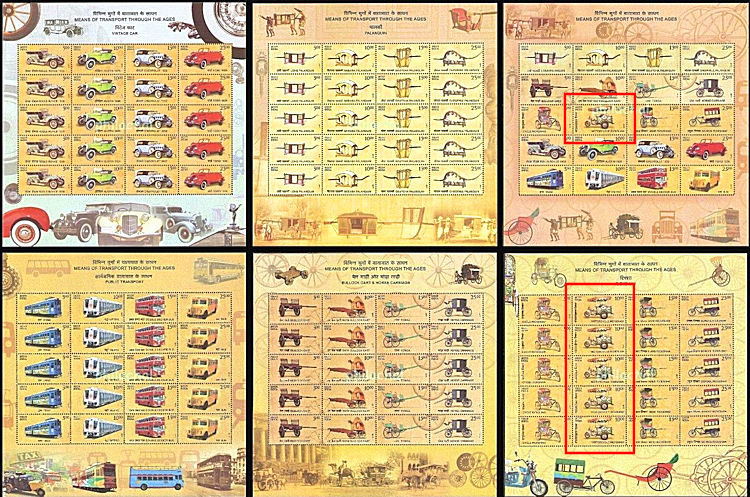 The complete series in 6 blocks, the motorcycle-rickshaw stamps are in the red rectangles
The complete series in 6 blocks, the motorcycle-rickshaw stamps are in the red rectangles
Each of the blocks contains 4 different values: 5, 10, 15 and 25 rupia, and 5 pieces of each stamp. Thus a total value of R. 275 (which equals around € 3.50). But for the collection sheet with the same postal value 3 times as much had to be paid on the postal counter. Why??? I don't know, but it makes that the complete series is often offered in the trade channels as loose strips and not in 1 block.
On 2 of the theme blocks are a few images that are also
interesting for us. The Rickshaw stamp block just shows on the bottom a part of an electrically driven transport 3-wheeler, and in the lower margin of the public transport block is a kind of Tempo 3-wheeler taxi depicted.
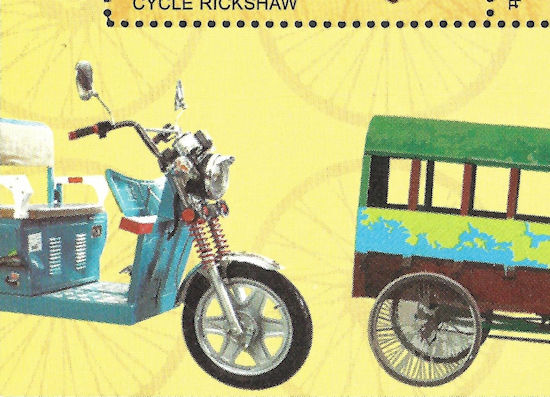
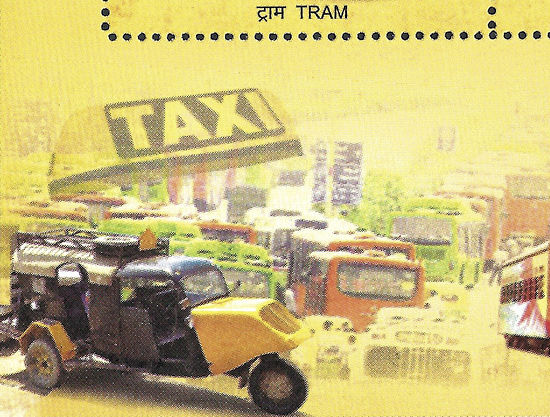
From this series also a booklet has been issued with brief information about the various vehicles and the issue. On page 17 (in Hindu) and 19 & 20 (in English) we find information about the rickshaws and on page 18 a larger image of the motorcycle-rickshaw. The stamp has been included in the booklet in a block with the 4 rickshaw stamps together. And also in the booklet we find the electrical 3-wheeler and the Tempo.
Here the most interesting pages from the booklet:
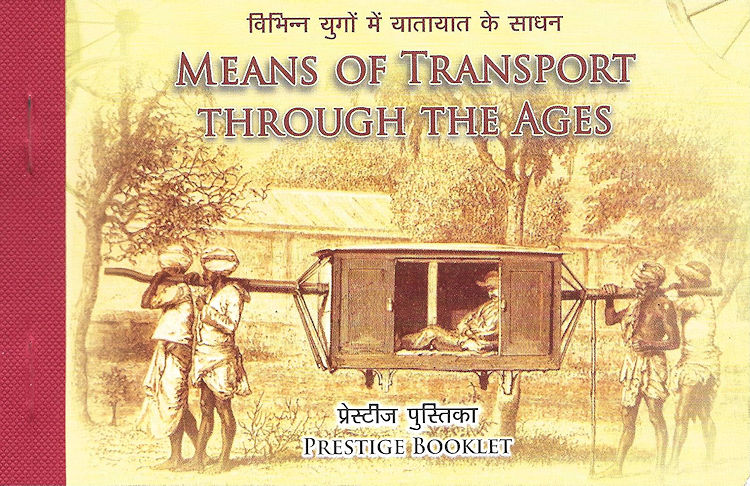
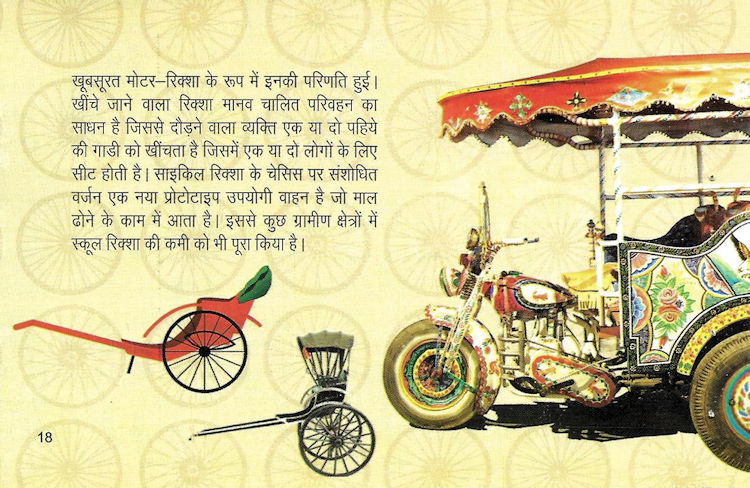
Page 18
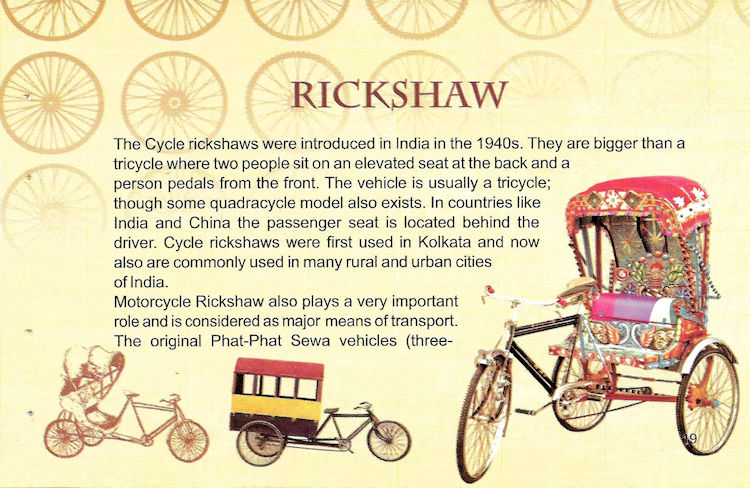
Page 19
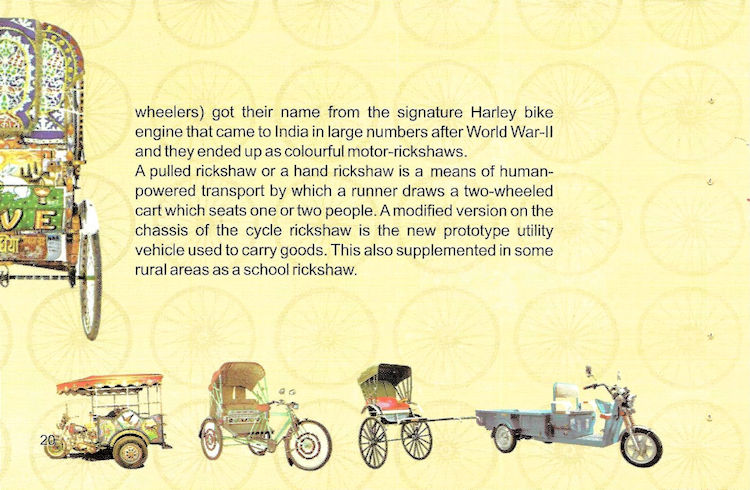
Page 20
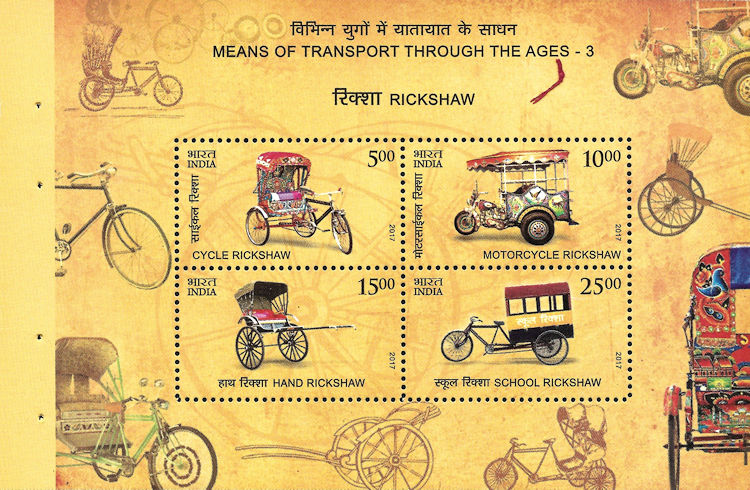
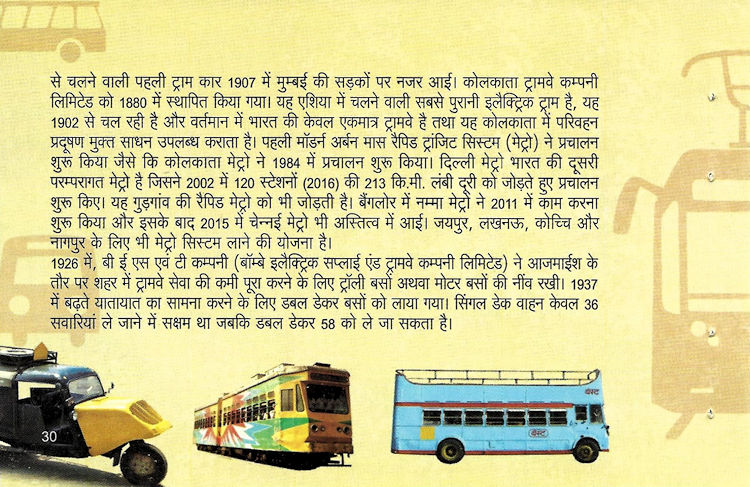
The pages have been stapled in the booklet, but at the counters the blocks have also been sold loose without the staple holes.
Off course also now FDC's have been sold. The pieces to be stamped could be handed over at more than 50 philatelic counters spread over India, and have been stamped with the First Day postmark until 2 weeks after the date of issue. This is not unusual: Germany, Austria and other countries (amongst which PostNL) do the same.
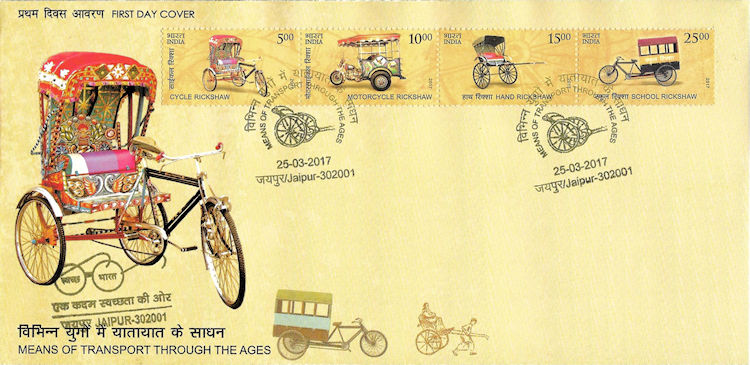
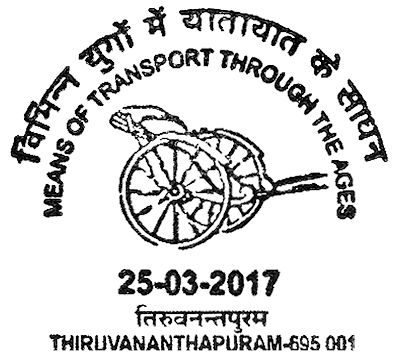
Here an image of an FDC postmark with an envelop filling city name
But on the date of the presentation the postmarks in the museum in Chennai (Madras) were made with red ink on special envelops with other images than the usual.
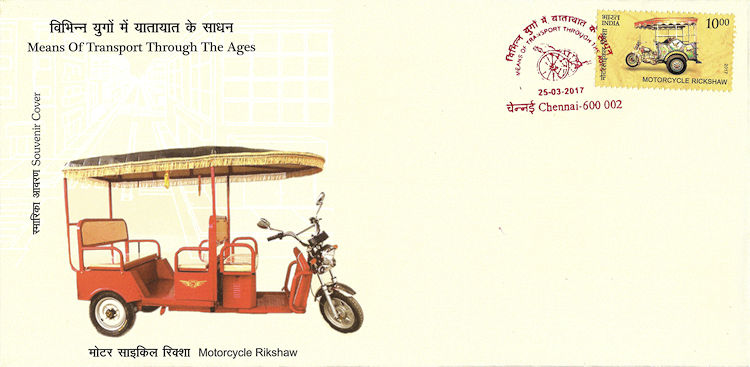
On some FDC's is an image of Ghandi-glasses. This postmark could be acquired directly on the counter for a small extra charge. The glasses stand for the Swachh Bharat Mission with the aim to supply sanitary means to all (poor) families.
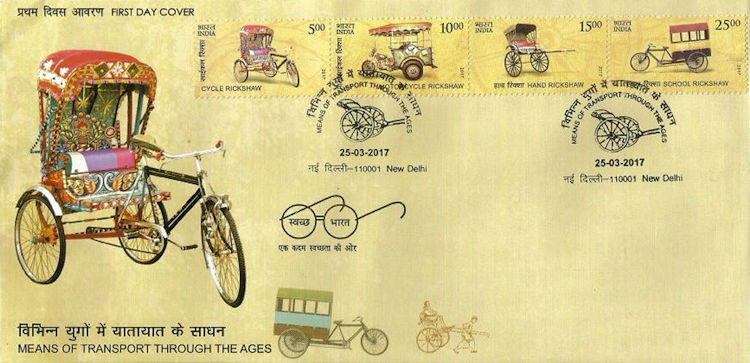
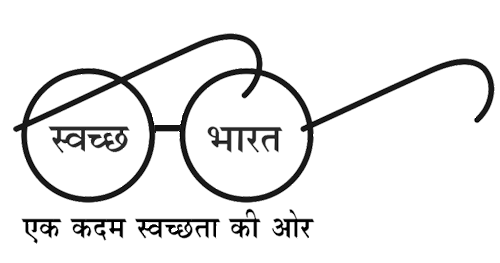
In the glasses the text "India clean".
In this way buyers could through the postal service contribute to this good intention.
Hans de Kloet
Top - Back to former page - Home |





 The complete series in 6 blocks, the motorcycle-rickshaw stamps are in the red rectangles
The complete series in 6 blocks, the motorcycle-rickshaw stamps are in the red rectangles











